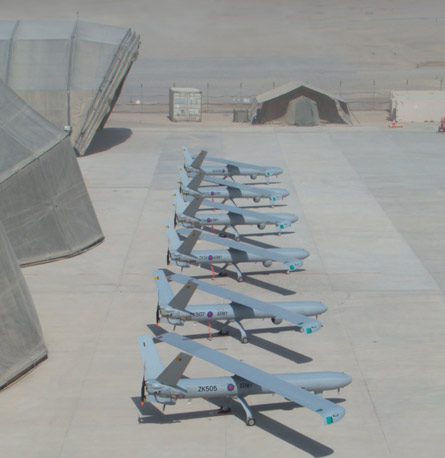Every year, the global unmanned air vehicle community shakes off the dog days of August to gather for the world’s largest unmanned systems exhibition, AUVSI’s annual Unmanned Systems North America, alternating between Washington DC and surprise locations every other year.
This year, more than 5,000 members of the international UAV community are heading to Denver, Colorado, braced for lean budget years juxtaposed with ever-increasing demand for its services.
Our special report examines those opposing themes, exploring the US Navy’s long-delayed small tactical unmanned air system (STUAS)/Tier II and Boeing/InSitu’s eventual win with the Integrator UAV and how the market will treat Europe’s medium-altitude long endurance (MALE) UAV offerings in coming lean budget years.
 |
|---|
© Elbit SystemsElbit Systems Hermes 450 |
The next generation of the much in-demand high-altitude long-endurance RQ-4 Global Hawk also faces financial challenges in the future, but even more problematic is getting flying time to test the Block 40 with the pressure on to ready other variants for deployment; the story accompanies a cutaway of Northrop Grumman’s Block 40 Global Hawk.
If 60,000ft of altitude and more than 20h of endurance are not enough, take a look at the pros and cons of the “ultra persistent” communications and surveillance capabilities of programmes such as AeroVironment’s massive, eight-engined Global Observer.
On the other end of the size spectrum, take an inside peek at Honeywell’s RQ-16 T-Hawk backpack-carried, man-launched micro-UAV, affectionately – or not so affectionately, depending on whom you ask – known to many as “the flying trash can”.
Contents
- Long endurance - Sysytems to go
- Surveillance - Orion to challenge
- Europe - MALEs on display
- Micro air vehicles - T-Hawk's next step
- Tactical aircraft - Tactical decision
- Global Hawk - Gold standard
- Cutaway - Global Hawk
- For more news about unmanned air vehicles
Source: Flight International






































